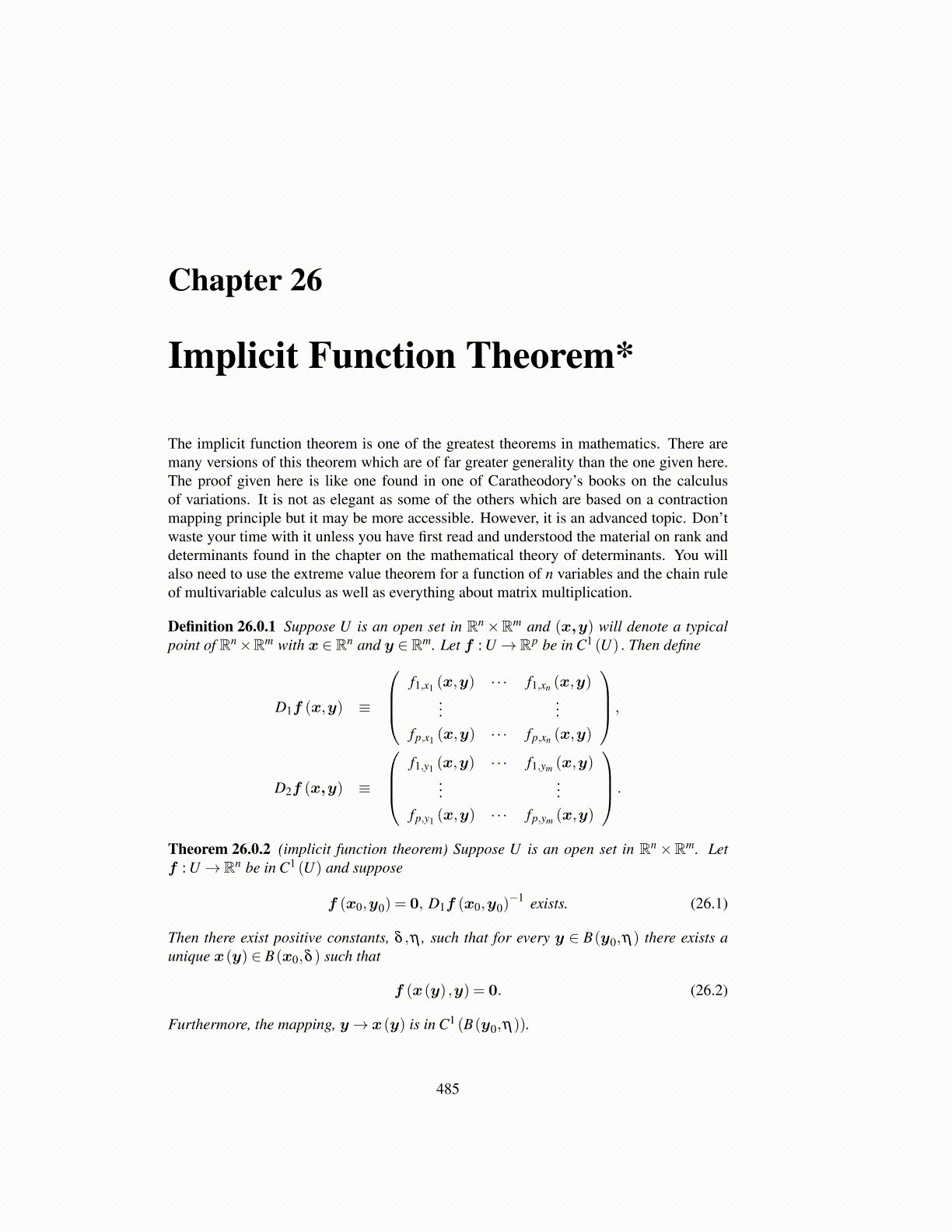
Chapter 26
Implicit Function Theorem*
The implicit function theorem is one of the greatest theorems in mathematics. There aremany versions of this theorem which are of far greater generality than the one given here.The proof given here is like one found in one of Caratheodory’s books on the calculusof variations. It is not as elegant as some of the others which are based on a contractionmapping principle but it may be more accessible. However, it is an advanced topic. Don’twaste your time with it unless you have first read and understood the material on rank anddeterminants found in the chapter on the mathematical theory of determinants. You willalso need to use the extreme value theorem for a function of n variables and the chain ruleof multivariable calculus as well as everything about matrix multiplication.
Definition 26.0.1 Suppose U is an open set in Rn×Rm and (x,y) will denote a typicalpoint of Rn×Rm with x ∈ Rn and y ∈ Rm. Let f : U → Rp be in C1 (U) . Then define
D1f (x,y) ≡
f1,x1 (x,y) · · · f1,xn (x,y)
......
fp,x1 (x,y) · · · fp,xn (x,y)
,
D2f (x,y) ≡
f1,y1 (x,y) · · · f1,ym (x,y)
......
fp,y1 (x,y) · · · fp,ym (x,y)
.
Theorem 26.0.2 (implicit function theorem) Suppose U is an open set in Rn×Rm. Letf : U → Rn be in C1 (U) and suppose
f (x0,y0) = 0, D1f (x0,y0)−1 exists. (26.1)
Then there exist positive constants, δ ,η , such that for every y ∈ B(y0,η) there exists aunique x(y) ∈ B(x0,δ ) such that
f (x(y) ,y) = 0. (26.2)
Furthermore, the mapping, y→ x(y) is in C1 (B(y0,η)).
485